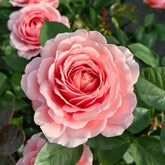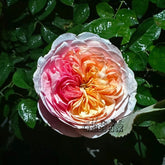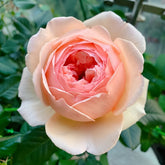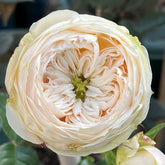Jasmina vs. Pierre de Ronsard: A Tale of Two Iconic Climbing Roses
Jasmina vs. Pierre de Ronsard: A Tale of Two Iconic Climbing Roses

In the world of climbing roses, two varieties continue to enchant gardeners with their charm and character: Jasmina, introduced by Kordes (Germany) in 1997, and the legendary Pierre de Ronsard (Eden Rose), bred by Meilland (France) in 1985. While Pierre de Ronsard has long reigned as a favorite, Jasmina is increasingly admired for its fragrance, color depth, and disease resistance.
Let’s explore the key differences between Jasmina and Pierre de Ronsard, helping you decide which rose fits your garden—or why you might want both.
🌸 1. Flower Appearance
Jasmina features cup-shaped blooms measuring 6–8 cm in diameter, with densely packed petals. The flowers are an elegant blend of blush pink and violet-purple tones, giving them a distinctive vintage look.
In comparison, Pierre de Ronsard produces larger flowers—up to 10–12 cm wide—with fewer, broader petals in soft pink with white outer edges. Its graceful bloom form and massive flower size make it a showstopper, especially in mass plantings.
🌼 2. Blooming Habit
Jasmina is a repeat bloomer, flowering throughout the growing season and offering long-lasting beauty from spring to late fall.
Pierre de Ronsard is best known for its single, stunning spring flush. Though it may rebloom slightly later in the season, its flowering is primarily concentrated in early summer.
🌹 3. Fragrance
Jasmina delights with a moderate fragrance, described as a mix of fruity and classic rose notes—a lovely sensory bonus in any garden.
Pierre de Ronsard, while visually striking, has a very light scent, often barely noticeable, which may disappoint fragrance lovers.
🌿 4. Growth Habit
Jasmina climbs to 2.5–3 meters with flexible, slender canes, making it easy to train on arches, fences, or trellises.
Pierre de Ronsard grows up to 3 meters and features thicker, sturdier canes, giving it a more robust, vertical presence in the garden.
🛡️ 5. Disease Resistance
Jasmina is known for its excellent disease resistance, particularly when given good air circulation and ample sunlight. It resists common issues like black spot and powdery mildew.
Pierre de Ronsard, while generally healthy, is more susceptible to black spot—especially in hot and humid climates where airflow is poor.













